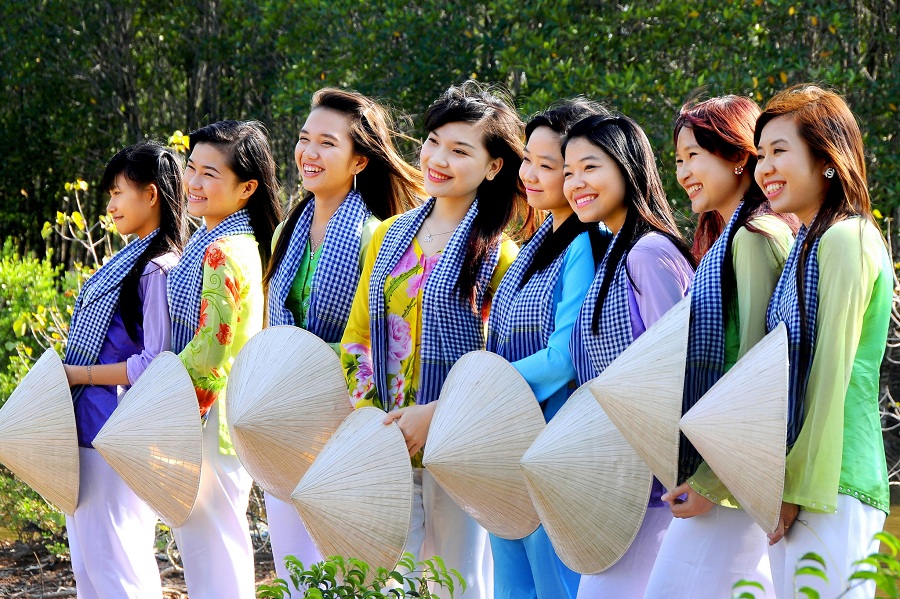
Among Vietnam ethnic community, Kinh ethnic group keep an important role in the national development. Accounting for 86.2% of Vietnam population with unique characteristics, the Kinh are worth to represent whole Vietnam country.
Customs and habits
The Kinh ancient villages are usually surrounded by bamboo groves. The communal house is a place for meeting and conducting common ritual ceremonies. The Kinh also live in mud houses. They enjoy the habits of chewing betel, smoking water pipes and cigarettes, drinking tea, and eating ordinary rice.
The husband is considered the head of the family. Children take the family name of their father. The eldest son is responsible for the worship of dead parents and grandparents. Each family lineage has a temple for their forefathers and the head of the family lineage handles all common affairs.
Monogamy is observed during marriage. The family of the man approves the marriage and organizes the wedding for him. After the wedding party, the bride goes to live with her husband's family. The Kinh attach much importance to fidelity and the virtues of the bride.
They worship their ancestors and also practice Buddhism, Confucianism, Taoism or Christianity to various extents.
Culture
The Kinh have a rich collection of literature which includes old tales, folk ballads, and proverbs. The written literature takes many forms such as poems, writings, books, and edicts. Song, music, sculpture, painting, dance and performance are also well developed and popular.
Costumes
In general, among all ethnic groups in Vietnam, Kinh people’s clothes and adornment seem to be the most modern and modest. Among all kinds of symbolic clothing, “ao dai” (Vietnam traditional long dress), whose basic design is of a long dress with slits on either side, is well-known to be the most representative of the country. Its graceful and serene image has become the status for Vietnamese women, being loved by not only the Vietnamese but also foreigners over the world. Nevertheless, formerly Kinh people used to dress rather differently compared with nowadays. Men used to wear a long gown with slits on side either and a turban, meanwhile women worn “ao tu than” (four-panel traditional dress) with four slits divided equally on its lower section.
In recent years, with the influence of Western and Eastern fashion trend, the Kinh normally wear jeans and other casual clothes that are easily found in almost every modern country.
Economy
Rice cultivation in submerged fields is the main economic activity of the Kinh. They also erect dykes and dig canals which help in the growing of wet rice, gardening, and sericulture. They also raise cattle and poultry. Pottery production has been very developed for a long time.